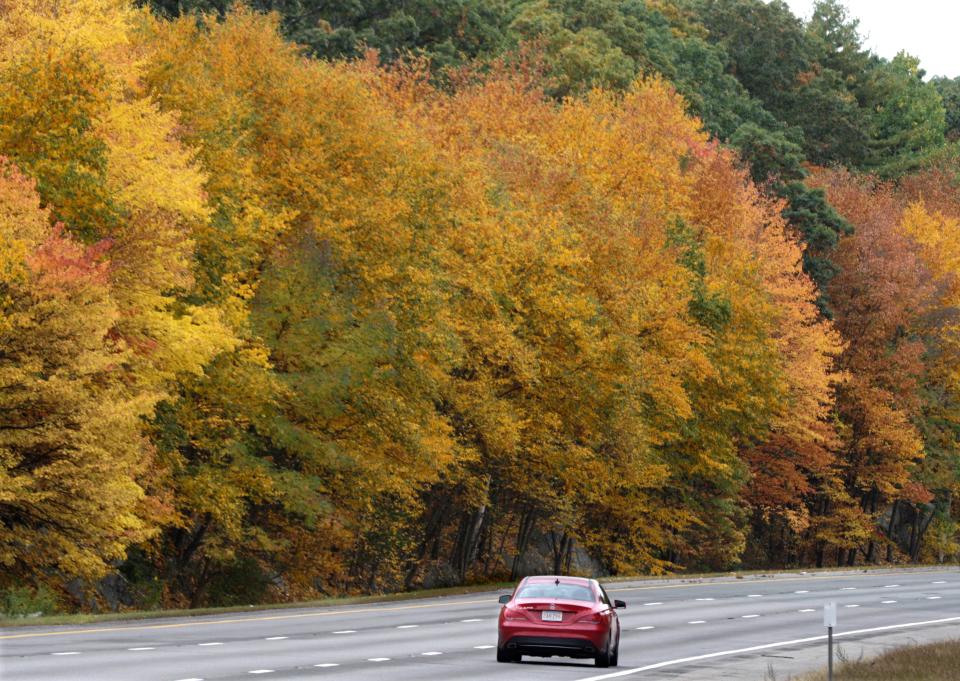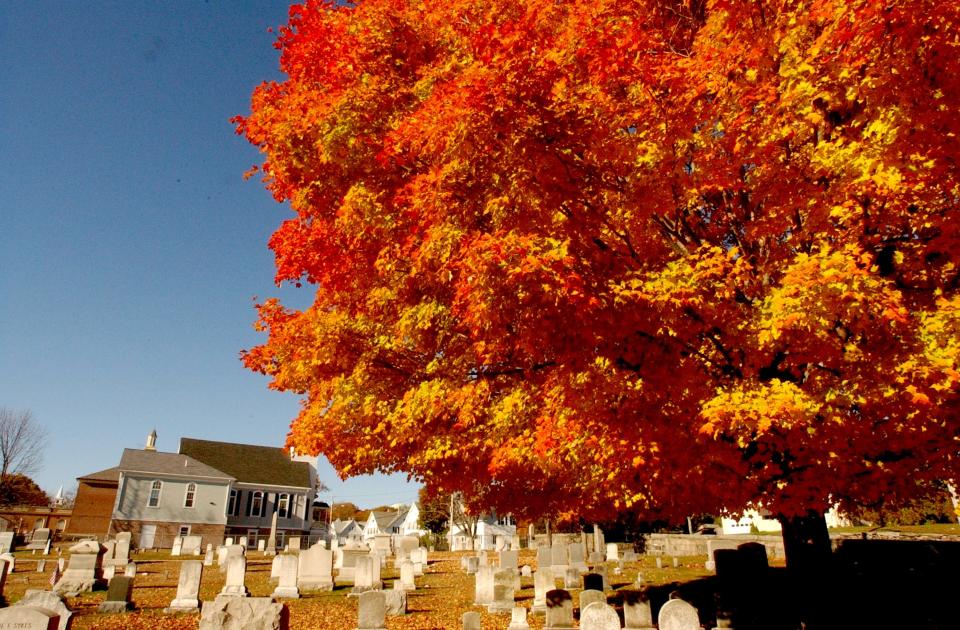Rhode Island isn't known for its fall foliage. Here's why, with a caveat.
When it comes to fall colors, New England indisputably has some of the best colors out there.
But Rhode Island always seems to come in last place when compared with other New England states.
For example, in the Old Farmer’s Almanac’s fall foliage predictions included recommendations of places to visit in every New England state except Rhode Island.
“I think it is fair to say that compared to Western MA, Vermont and Maine, Rhode Island is less ideal for leaf peeping,” Scott Wheeler, the superintendent of parks, grounds & forestry for Newport, wrote in an an email.
Less than ideal, but not bad for leaf peeping. But we’ll get to that in a second.

Why does Rhode Island not have the same reputation as other New England states for fall color?
First, there are a few reasons why fall doesn’t strike quite as brightly here. The main reason has nothing to do with the trees, according to University of Rhode Island Professor Keith Killingbeck. It’s the topography.
“Topographically, Rhode Island is pretty flat,” Killingbeck said. “When you drive up to the Green Mountains or the White Mountains, you're looking at the face of a forest rather than at a forest from the side, so what you're seeing is a canopy that pops.”
Second, foliage peaks a little after the state’s northern neighbors. While in New Hampshire, Vermont and Maine the colors are vivid in September, the local foliage peaks about the second week of October, Killingbeck said. So if you’re impatient for those blazing reds, Rhode Island isn’t going to make the top of the list.
Fall Guide: 5 great R.I. places to leaf peep and photograph foliage
And the third reason is that at some of the most popular tourist destinations in the state, the canopy has been significantly altered.
“In Newport and many of our coastal communities the majority of the native forest was cleared and the trees planted by people were non-native trees from Europe or Asia,” Wheeler wrote. “Trees from other parts of the world may still have nice fall color but their clock is out of sequence with our native trees and other introduced trees so you do not have the collective impact that a stand of native birches, maples and oaks would have.”
Wheeler added that invasive plants, which often have poor fall color, aren’t helping either.
The case for Rhode Island’s fall foliage

All that being said, Rhode Island does have great foliage.
“If you’re looking at individual plants and individual leaves, we can see all the colors you are going to see anywhere else,” Killingbeck said. “They’re spectacular.”
Fall foliage: Spectacular colors, and sites along the way, make R.I.'s Route 102 stand out
Wheeler also was quick to defend Rhode Island’s autumnal beauty, recommending leaf peepers head to Burlingame State Park, Arcadia Management Area or the Tillinghast Pond Management Area.
“My wife and I section hiked the RI North-South [trail] over fall weekends one year and the colors were amazing,” he wrote. “There are also plenty of individual trees with beautiful fall color in Newport and in almost every community in Rhode Island for people who keep an eye out for them.”
When to expect different plants to start changing colors
While peak season doesn’t hit until October, some plants will start changing color as early as August.
“As I was driving back from the University of Rhode Island today back home, I saw a beautiful poison sumac that had already turned,” Killingbeck said. “The leaves turned this beautiful orange color.”
Other species that start to turn early include poison ivy, which will glow red, and Virginia creeper, which turns maroon.
By the first or second week in October, Killingbeck said the maples in wetland areas will turn red. By the third week, the sugar maples in Rhode Island are often peaking, though some years they are a bit later.
Want more fall color?
If you want to bring more fall color to your neck of the woods, Wheeler’s tip is to “take action” and start planting in your own yard.
“The first thing I planted at my current house was a native Green Mountain Sugar Maple tree,” he wrote. “A little over 10 years later my front yard is transformed each fall with a kaleidoscope of fall colors. I find great enjoyment watching for the first signs of color, followed by the tide of colors sweeping across the green canopy, and I mourn when the last of the leaves lose hold in a fall rainstorm.”
This article originally appeared on The Providence Journal: RI's fall foliage isn't a favorite of leaf peepers. Here's why
